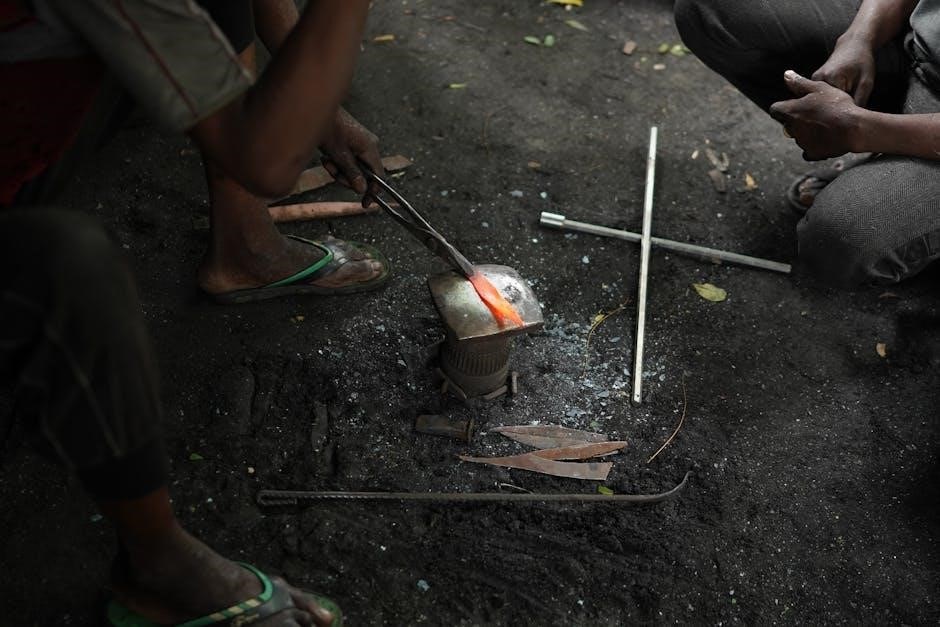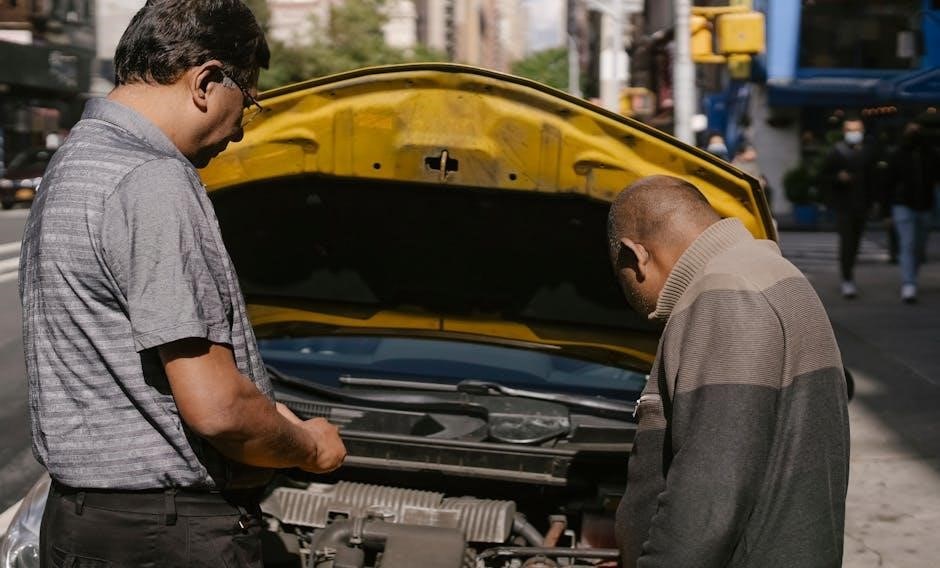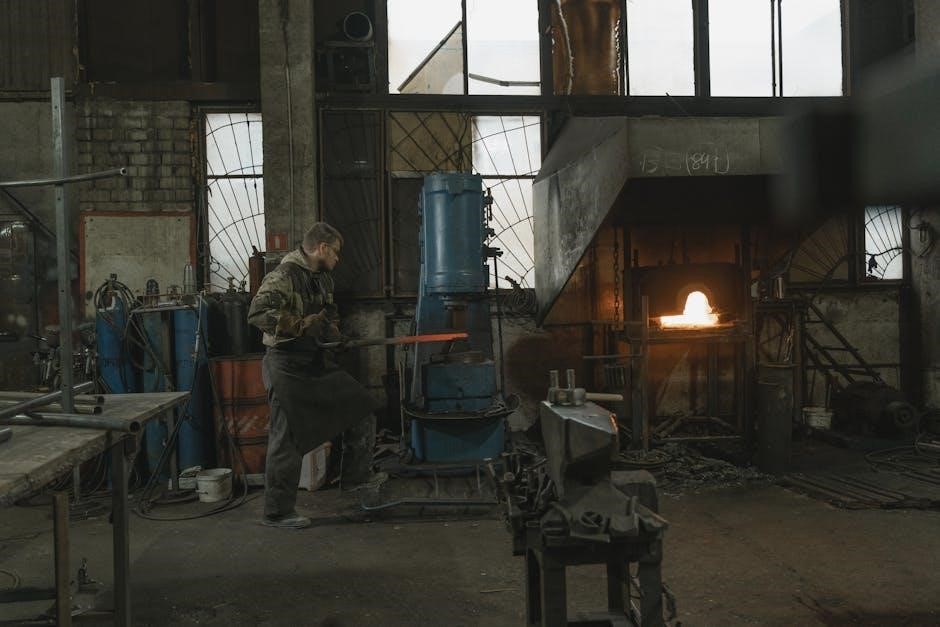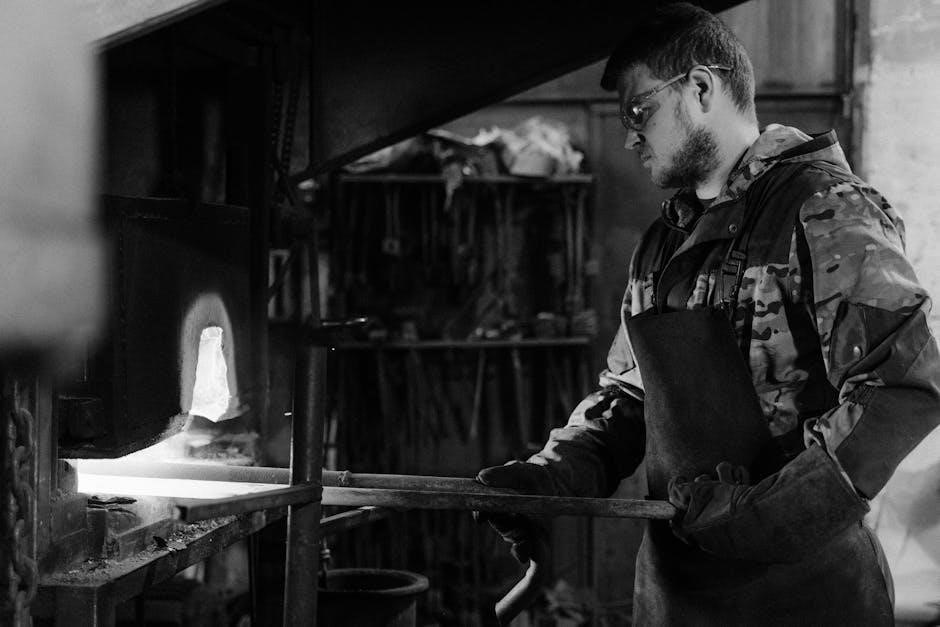
to identify and resolve problems efficiently using a Carrier furnace troubleshooting manual with online guides.
Understanding Common Issues

Understanding common issues is crucial for effective troubleshooting, a Carrier furnace troubleshooting manual can provide valuable insights. The manual outlines various problems that may arise, such as a furnace that won’t turn on or one that’s producing little to no heat. By familiarizing yourself with these issues, you’ll be better equipped to identify the root cause of the problem. A Carrier furnace troubleshooting guide can help you navigate the process, providing step-by-step instructions and helpful tips; Additionally, online resources and forums can offer further guidance and support. It’s essential to approach troubleshooting in a methodical and patient manner, as rushing through the process can lead to misdiagnosis or overlooked solutions. With a thorough understanding of common issues and the right resources, you’ll be well on your way to resolving furnace problems and ensuring your heating system operates efficiently and effectively. This knowledge will serve as a foundation for more in-depth troubleshooting.
Importance of Regular Maintenance
Regular maintenance is essential for extending the lifespan of your furnace and preventing potential issues. A well-maintained furnace operates more efficiently, reducing energy consumption and lowering utility bills. By performing routine checks and tasks, you can identify and address minor problems before they escalate into major issues. This proactive approach can help prevent costly repairs and minimize downtime. A Carrier furnace troubleshooting manual can provide guidance on maintenance schedules and tasks, such as cleaning or replacing filters, inspecting vents, and checking thermostat settings. Online resources and manufacturer recommendations can also offer valuable advice on maintenance best practices. By prioritizing regular maintenance, you can ensure your furnace runs smoothly and reliably, providing consistent heat and comfort throughout the year. Regular maintenance can also help identify potential safety hazards, such as carbon monoxide leaks or faulty electrical connections, and allow for prompt corrective action.

Identifying the Problem
Identifying furnace problems involves analyzing symptoms and
reviewing
system performance to determine the root cause of issues using a Carrier furnace troubleshooting manual.
Symptoms of a Malfunctioning Furnace
Symptoms of a malfunctioning furnace can vary, but common signs include uneven heating, cold spots, and increased energy bills. A furnace that is not functioning properly may also produce strange noises, such as rattling, clunking, or hissing sounds. In some cases, a malfunctioning furnace may not produce any heat at all, or it may cycle on and off repeatedly. Other symptoms can include a furnace that is leaking water or gas, or one that is producing a strong odor. It is essential to identify these symptoms early on to prevent further damage to the furnace and to ensure a safe and comfortable living environment. By recognizing these symptoms, homeowners can take prompt action to address the issue and prevent more costly repairs down the line. A Carrier furnace troubleshooting manual can provide guidance on how to identify and address these symptoms. Regular maintenance can also help to prevent these symptoms from occurring.
Common Causes of Furnace Failure
Common causes of furnace failure include a dirty or clogged air filter, which can restrict airflow and cause the furnace to overheat. Other causes can include a malfunctioning thermostat, ignition problems, or a faulty limit switch. Low fuel levels or issues with the gas supply can also prevent the furnace from functioning properly. Additionally, wear and tear on components such as the ignitor, blower motor, and heat exchanger can lead to furnace failure. A Carrier furnace troubleshooting manual can help to identify these common causes and provide guidance on how to address them. Regular maintenance, such as replacing the air filter and inspecting the furnace’s components, can also help to prevent furnace failure. By understanding the common causes of furnace failure, homeowners can take steps to prevent them and ensure their furnace runs efficiently and effectively. This can help to extend the lifespan of the furnace and prevent costly repairs.

Troubleshooting Steps
Troubleshooting involves systematic steps to identify and resolve furnace issues using a Carrier furnace troubleshooting manual and online guides effectively.
Checking the Air Filter and Thermostat
Checking the air filter and thermostat is a crucial step in troubleshooting a Carrier furnace. A dirty or clogged air filter can restrict airflow, causing the furnace to overheat or run inefficiently. Regularly replacing or cleaning the filter can prevent this issue. The thermostat is also a critical component, as it signals the furnace to turn on and off. A malfunctioning thermostat can lead to incorrect temperature readings, causing heating problems. To check the thermostat, ensure it is set to the correct temperature and mode. If the thermostat is digital, check the display for any error messages. If the issue persists, try replacing the batteries or resetting the thermostat. Additionally, inspect the thermostat’s wiring and connections for any damage or corrosion. By checking the air filter and thermostat, homeowners can identify and resolve common issues, ensuring their Carrier furnace runs efficiently and effectively. This simple step can help prevent costly repairs and maintain a comfortable home environment.
Inspecting the Ignitor and Blower Motor
Inspecting the ignitor and blower motor is essential for identifying potential issues with a Carrier furnace. The ignitor can wear out over time, preventing the furnace from igniting. To inspect the ignitor, look for signs of wear or damage, such as cracks or corrosion. If the ignitor is faulty, it may need to be replaced. The blower motor is also a critical component, as it circulates air throughout the home. A faulty blower motor can cause uneven heating or system shutdowns. To inspect the blower motor, check for any unusual noises or vibrations. Additionally, ensure the motor is properly lubricated and that the belts are in good condition. By inspecting the ignitor and blower motor, homeowners can identify potential problems and take corrective action to prevent furnace failures. Regular inspections can help extend the life of the furnace and maintain efficient operation. This can also help reduce energy bills and prevent costly repairs.

Resolving Specific Issues
Resolving issues requires patience and online guides for Carrier furnace troubleshooting manual solutions.
Fixing a Furnace that Won’t Produce Heat
To fix a furnace that won’t produce heat, first check the thermostat settings and ensure it’s set to heat mode. Then, inspect the air filter and clean or replace it if necessary, as a dirty filter can restrict airflow and prevent heat generation. Next, check the pilot light and ignition system to ensure they’re functioning properly. If the pilot light is out, try relighting it according to the manufacturer’s instructions. Additionally, check the gas supply lines for any leaks or blockages. If none of these steps resolve the issue, it may be necessary to consult a professional technician to diagnose and repair the problem. A faulty limit switch or malfunctioning ignitor can also prevent the furnace from producing heat. By following these steps and using a Carrier furnace troubleshooting manual, you can identify and fix the issue and get your furnace working again. Regular maintenance can also help prevent heat generation problems.
Addressing Uneven Heating and System Shutdowns
Uneven heating and system shutdowns can be frustrating and uncomfortable, but they can often be resolved with some troubleshooting. One common cause of uneven heating is a dirty or clogged air filter, which can restrict airflow and cause the furnace to overheat or shut down. Regularly cleaning or replacing the air filter can help prevent this issue. Another possible cause is a malfunctioning thermostat, which can cause the furnace to cycle on and off incorrectly. Checking the thermostat settings and ensuring it’s calibrated correctly can help resolve this issue. Additionally, inspecting the ductwork for any leaks or blockages can help ensure that heat is being distributed evenly throughout the home. By following these steps and using a Carrier furnace troubleshooting manual, you can identify and address the root cause of uneven heating and system shutdowns, and get your furnace working efficiently again to provide consistent heat. This helps to maintain a comfortable home environment.